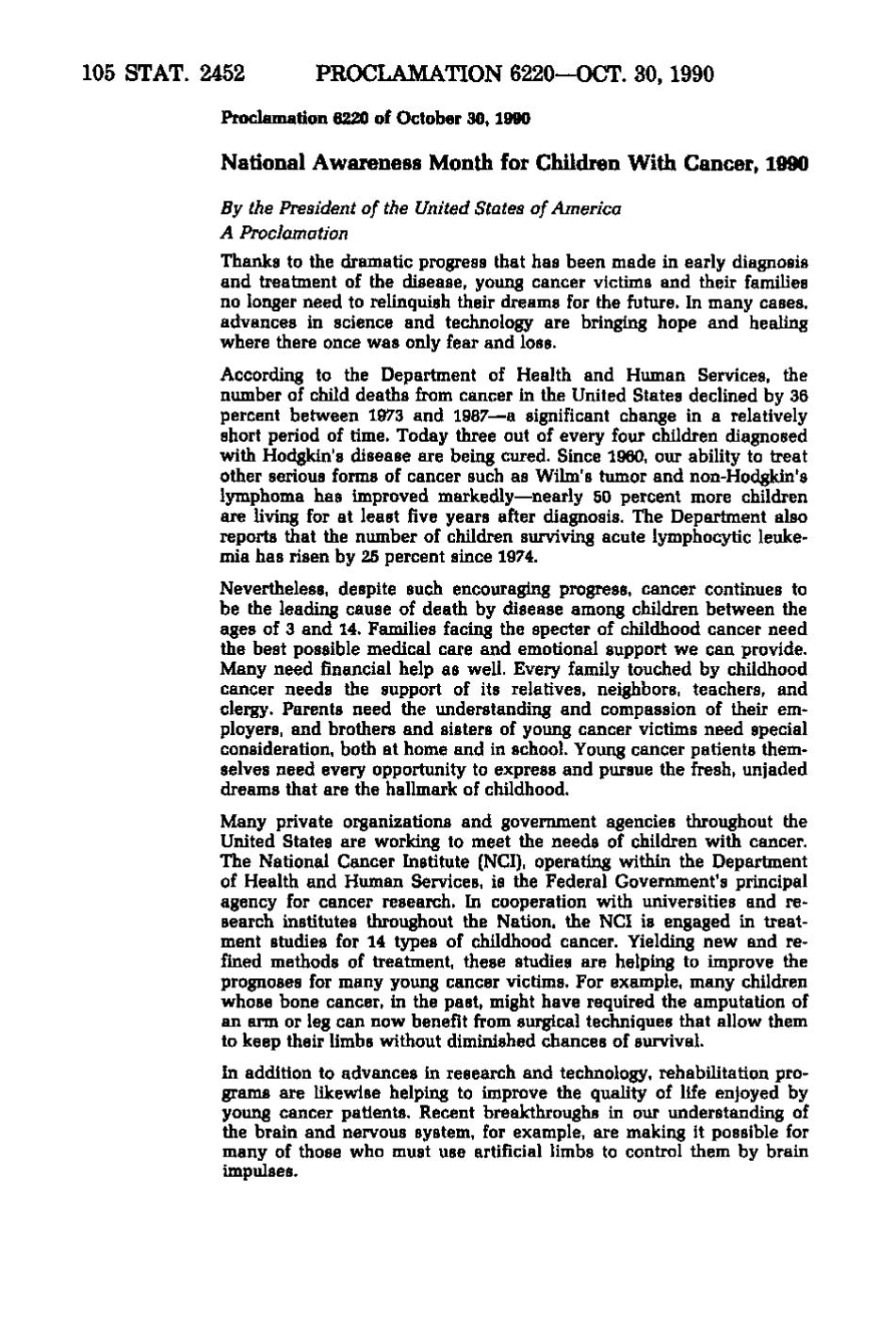105 STAT. 2452 PROCLAMATION 6220—OCT. 30, 1990 Proclamation 6220 of October 30, 1990 National Awareness Montii for Children Witii Cancer, 1990 By the President of the United States of America A Proclamation Thanks to the dramatic progress that has been made in early diagnosis and treatment of the disease, young cancer victims and their famihes no longer need to relinquish their dreams for the future. In many cases, advances in science and technology are bringing hope and healing where there once was only fear and loss. According to the Department of Health and Human Services, the number of child deaths from cancer in the United States declined by 36 percent between 1973 and 1987—a significant change in a relatively short period of time. Today three out of every four children diagnosed with Hodgkin's disease are being cured. Since 1960, our ability to treat other serious forms of cancer such as Wilm's tumor and non-Hodgkin's lymphoma has improved markedly—nearly 50 percent more children are living for at least five years after diagnosis. The Department also reports that the number of children surviving acute lymphocytic leukemia has risen by 25 percent since 1974. Nevertheless, despite such encouraging progress, cancer continues to be the leading cause of death by disease among children between the ages of 3 and 14. Families facing the specter of childhood cancer need the best possible medical care and emotional support we can provide. Many need financial help as well. Every family touched by childhood cancer needs the support of its relatives, neighbors, teachers, and clergy. Parents need the understanding and compassion of their employers, and brothers and sisters of young cancer victims need special consideration, both at home and in school. Young cancer patients themselves need every opportunity to express and pursue the fresh, imjaded dreams that are the hallmark of childhood. Many private organizations and government agencies throughout the United States are working to meet the needs of children with cancer. The National Cancer Institute (NCI), operating within the Department of Health and Human Services, is the Federal Government's principal agency for cancer research. In cooperation with universities and research institutes throughout the Nation, the NCI is engaged in treatment studies for 14 types of childhood cancer. Yielding new and refined methods of treatment, these studies are helping to improve the prognoses for many young cancer victims. For example, many children whose bone cancer, in the past, might have required the amputation of an arm or leg can now benefit from surgical techniques that allow them to keep their limbs without diminished chances of survival. In addition to advances in research and technology, rehabilitation programs are likewise helping to improve the quality of life enjoyed by young cancer patients. Recent breakthroughs in our understanding of the brain and nervous system, for example, are making it possible for many of those who must use artificial limbs to control them by brain impulses.
�
